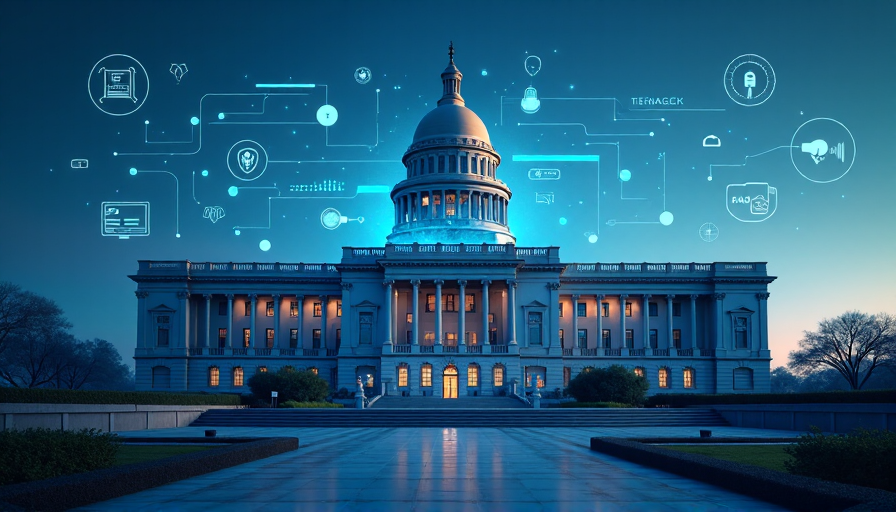
Revolutionizing Governance with Artificial Intelligence: Enhancing Efficiency and Citizen Engagement
In today’s rapidly evolving digital landscape, artificial intelligence (AI) is no longer confined to private enterprises. Government agencies are increasingly exploring AI as a transformative tool to streamline operations and improve public services. From boosting data-driven decision-making to cutting costs, AI is proving that it can deliver enhanced citizen engagement and operational efficiency across all levels of government.
AI’s Role in Public Sector Transformation
AI technologies empower machines to mimic human reasoning, process voluminous amounts of sensitive data, and provide insights that far surpass human capabilities. Notably, generative AI has introduced a revolutionary element by creating original content and facilitating natural, intuitive interactions. Although government data is both vast and complex—often trapped in fragmented systems—AI offers the potential to break down these silos and establish cohesive, streamlined operations.
Government agencies are tasked with managing everything from legislative records to critical transactional data. By leveraging AI, these institutions can overcome the hurdles of handling overwhelming data streams, thereby improving service delivery, reducing operational costs, and ultimately increasing citizen satisfaction.
A Journey into Practical AI Applications
In a fictional state government scenario, imagine an agency facing a persistent challenge: outdated communication channels and cumbersome administrative processes. With AI integration, this agency successfully transformed its operations—optimizing transportation systems, narrowing educational divides, boosting healthcare diagnostics, and revitalizing citizen service interfaces. The result was a more agile and responsive government, ready to meet modern challenges head-on.
Transportation Transformation
AI-driven solutions in transportation facilitate traffic flow analysis, predictive maintenance, and real-time route planning. In the US, for instance, public transit authorities use sensor data combined with machine learning algorithms to reduce congestion and improve roadway safety, ensuring that citizens spend less time in transit and more time engaging in their communities.
Educational Empowerment
Across the globe, governments harness AI to democratize access to education. By implementing personalized learning platforms and AI-enhanced training modules, agencies work towards bridging educational gaps. UNESCO recently highlighted AI’s capacity to revolutionize teaching practices, ensuring that quality education becomes both inclusive and accessible.
Advancing Healthcare
In healthcare, AI streamlines diagnostics, accelerates clinical research, and automates critical administrative tasks. By effectively analyzing clinical data, AI-powered tools are able to forecast disease outbreaks and assist in early intervention, as exhibited by governments using predictive analytics to stave off potential pandemics.
Enhancing Citizen Services
Citizens expect swift, efficient public services. Yet, government agencies have traditionally lagged in customer satisfaction ratings. Integrating AI through dedicated chatbots, enhanced search features, and automated document processing bridges this service gap, providing consistent, personalized, and round-the-clock support.
Overcoming Internal Bottlenecks
Internal processes within government agencies often involve cumbersome paperwork and data retrieval issues. AI dramatically reduces manual labor by automating document sorting and data classification, thereby cutting inefficiencies and curbing human error. In the US, estimates suggest that AI could unlock up to $519 billion in productivity gains by automating outdated practices by 2033.
Real-World Implementation Strategies
Successful AI deployment in the public sector hinges on several strategic steps:
- Real-time Data Visibility: Ensuring that all relevant data is accessible in real time to drive accurate insights.
- Clear Planning & Governance: Establishing ethical guidelines and transparent regulatory policies to support responsible AI adoption.
- Identifying Targeted Use Cases: Pinpointing areas such as healthcare, education, or public safety where AI can have the most significant impact.
- Robust Integration & Security: Seamlessly integrating AI with current systems while enforcing stringent data security measures.
Navigating the Governance and Regulatory Landscape
With AI’s growing influence comes the need for robust governance frameworks. Governing bodies must balance innovation with regulatory oversight to ensure ethical and secure AI usage. While the United States grapples with a patchwork of state-level regulations, the European Union leads with its comprehensive AI Act—a landmark framework designed to uphold democratic values and protect human rights.
Ensuring Data Privacy and Security
For any AI system to succeed in the public domain, protecting sensitive information is paramount. Advanced encryption, strict access controls, and continuous monitoring form the backbone of a secure AI environment. Emerging techniques such as retrieval augmented generation (RAG) further solidify data integrity by anchoring AI insights in verified, up-to-date information.
Government Initiatives and Future Directions
Government-led initiatives are already paving the way for a digital revolution. Programs like the US Department of State’s AI Inventory 2024 and projects such as AI-powered translation of consular content, violence forecasting models, and political influence simulations demonstrate AI’s versatility across various sectors. These initiatives not only improve efficiency and service delivery but also highlight the enormous potential of data-driven decision-making in government.
Leveraging Elasticsearch for AI in Government
Elastic Search AI Platform is at the heart of this digital transformation, offering robust search capabilities, advanced data analytics, and scalable infrastructure. By integrating Elasticsearch into their operations, government agencies can enhance transparency, optimize public records management, and foster a culture of innovation and efficiency.
In summary, as government agencies strive to adapt to a digital age, AI stands out as a key enabler of change. From transforming transportation and education to redefining healthcare and citizen services, the future of government is being reshaped by intelligent technology. By embracing AI within a strict framework of governance and security, the public sector is poised to deliver on the promise of smarter, more responsive governance.
Note: This publication was rewritten using AI. The content was based on the original source linked above.